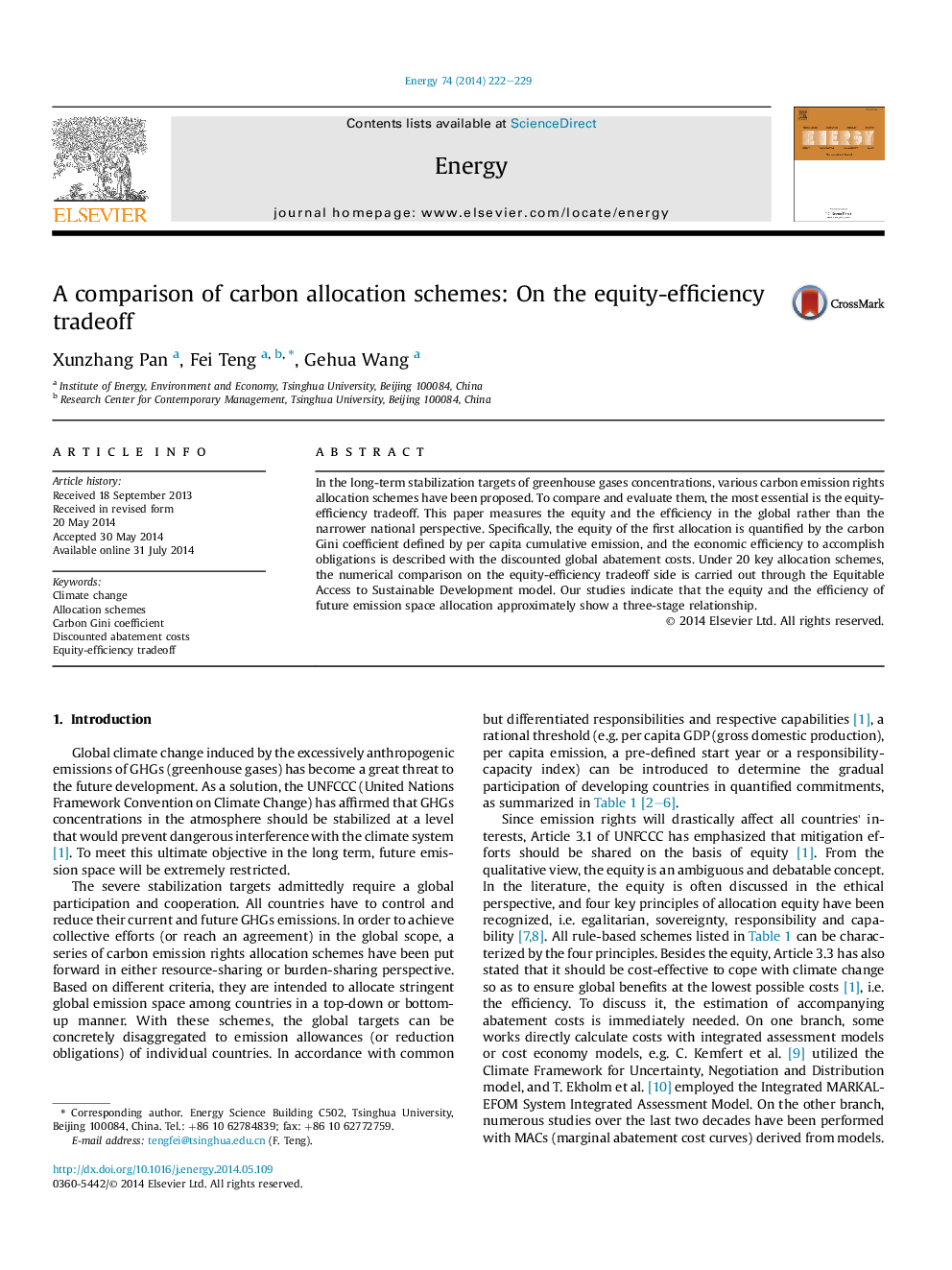| Article ID | Journal | Published Year | Pages | File Type |
|---|---|---|---|---|
| 1732455 | Energy | 2014 | 8 Pages |
•The equity-efficiency tradeoff among 20 key allocation schemes is carried out.•Both the equity and the efficiency are measured in the global perspective.•The Equitable Access to Sustainable Development model is adopted as the study tool.•A practical trade framework is indispensable to efficiently address climate change.•The equity and the efficiency generally show a three-stage tradeoff relationship.
In the long-term stabilization targets of greenhouse gases concentrations, various carbon emission rights allocation schemes have been proposed. To compare and evaluate them, the most essential is the equity-efficiency tradeoff. This paper measures the equity and the efficiency in the global rather than the narrower national perspective. Specifically, the equity of the first allocation is quantified by the carbon Gini coefficient defined by per capita cumulative emission, and the economic efficiency to accomplish obligations is described with the discounted global abatement costs. Under 20 key allocation schemes, the numerical comparison on the equity-efficiency tradeoff side is carried out through the Equitable Access to Sustainable Development model. Our studies indicate that the equity and the efficiency of future emission space allocation approximately show a three-stage relationship.
